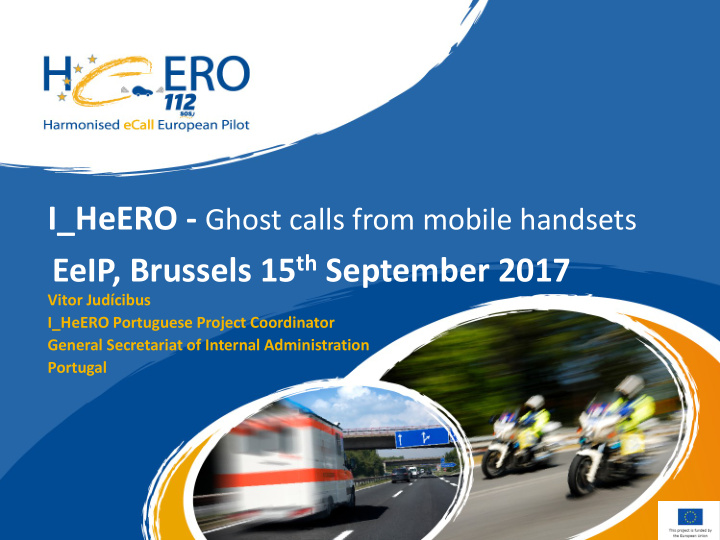



I_HeERO - Ghost calls from mobile handsets EeIP, Brussels 15 th September 2017 Vitor Judícibus I_HeERO Portuguese Project Coordinator General Secretariat of Internal Administration Portugal
Agenda • Introduction • ETSI Standard • Examples of true and fake eCalls (ghost calls) • Solution implemented in Portugal • Graphical evidences • Conclusion
Introduction • In 2015 one of the first actions in the scope of the I_HeERO Project in Portugal was the implementation of the eCall flag by all MNO’s ; • During the tests we found that some misconfigured mobile handsets when calling to 112 mimicked the eCall. Normal emergency calls were identified by the mobile networks as eCalls which did not comply with the standard (ETSI 3GPP TS 24.008). • These mobile terminals provided erroneous values in the Emergency Category of Emergency Setup messages in the Mobile Radio Interface.
ETSI Standard - ETSI 3GPP TS 24.008
Erroneous values The most common audit finding was the mobile handsets sending all bits set to "1" All bits are set to 1 Trace Example – Incorrect eCall
Correct values A correct manual eCall value should be like the example below (only the 6 th bit is set to 1 all others set to 0) Trace Example – Correct eCall
Solution Implemented in Portugal Bits Type of call Emergency Category X 6 ="1" 00 10 00 00 Manual eCall X 7 ="1" 01 00 00 00 Automatic eCall X 6 & X 7 ="11" 01 10 00 00 Manual eCall Other combinations Default Normal Emergency Call
Tested Cases in Lab Environment Emergency Type of call Category Notes (MEO network) (bits) 01 00 00 00 Automatic eCall Tested in Lab 00 10 00 00 Manual eCall Tested in Lab Not Tested, because we don’t have 01 10 00 00 Manual eCall terminals with this implementation Not Tested, because we don’t have 11 00 00 00 Automatic eCall terminals with this implementation Not Tested, because we don’t have 10 10 00 00 Manual eCall terminals with this implementation Not Tested, because we don’t have 11 10 00 00 Manual eCall terminals with this implementation Normal Emergency 11 11 11 11 Tested in Lab Call xx xx xx xx Normal Emergency Not Tested, because we don’t have (other Call terminals with this implementation combinations)
Evidences August 2017 Sept 2017 Sept 2017 August 2017
Conclusion The software in the core network should analyze all the bits of the emergency category, and not only the bits corresponding to manual eCall and automatic eCall. After this analysis and according to the detected combination of bits, the call should then be classified as an eCall or a normal emergency call. Complementary Measures: Nowadays our MNO’s only include in their packages handsets that are submitted to tests and prove to have the emergency standard bits correctly configured.
Vitor Judícibus General Secretariat of Internal Administration I_HeERO – Portuguese Project Coordinator Critical Communications Department vjudicibus@sg.mai.gov.pt
Recommend
More recommend